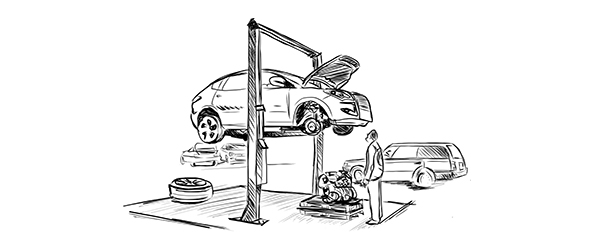Let’s face it — there are electric cars out there, and they seem to take up much of the airspace because they’re trendy and exciting. But the majority of the world today still runs on fuel.
How much fuel? Well, it’s to the tune of around 369 million gallons a day, give or take, just to supply our daily drives here in the United States. Those in the biofuel industry probably have better data than we do as a shop, but either way you look at it, that’s a huge amount of fuel!
Since the dawn of the fuel era, prices move at the drop of a hat in either direction, and that direction is usually up. We mechanics, like average consumers, like our fuel affordable. For us, it’s largely because we like horsepower — and lots of it — and that takes fuel to make. And when we look out our window to find corn as far as the eye can see, we think of affordable, clean biofuel that’s produced nearby and saves us some money. And we know that biofuel creates horsepower, which is proven by its use in racing leagues like IndyCar and NASCAR.
Today most Americans can pull up to a pump and find several fuel choices. In our home state of South Dakota, we usually have options like E10, E15, E20, E30, and E85 at the pump, and we mechanics have the expertise to know what to choose. But when we ask the average consumer things like, “Do you know what can go in your car’s tank? Is it a Flex-Fuel vehicle? What’s recommended?” we tend to find that most drivers don’t know all the options they could be using.
The first step is to know what you’re driving. Many Flex-Fuel vehicles have a label on the fuel door or cap that specifies fuel type, but you can’t always go by that alone. There are also some vehicles with Flex-Fuel decals affixed to the door glass or on the rear of the vehicle. But if you want to really verify what fuel your vehicle can use, you can ask your mechanic, who can check your VIN or check it yourself by doing a search online.
If you find you do have a Flex-Fuel vehicle, your engine is designed to use any blend from E10 to E85. For most Flex-Fuel vehicles, we’ve found that E30 provides the best blend of low cost, high octane, and good fuel mileage. And if you need further reassurance, know that E30 is what we at the shop use in our own vehicles!
If you have any 2001 or newer vehicles — which is most of the cars on the road — E10 and E15 are great choices. Always use at least the minimum octane recommended for your vehicle. If a vehicle is run with lower octane than for what it was designed, the computer takes over to lower performance and protect it from detonation. This will cut both power and fuel economy in the vehicle.
If you take nothing else away from this article, take this: find out what your vehicle is capable of by finding out what blend of bioethanol it can use.







